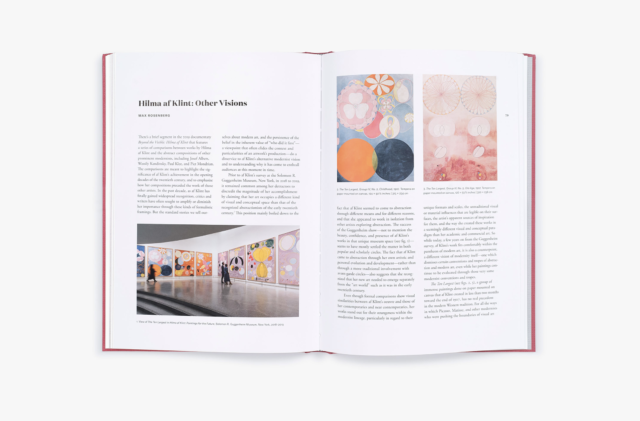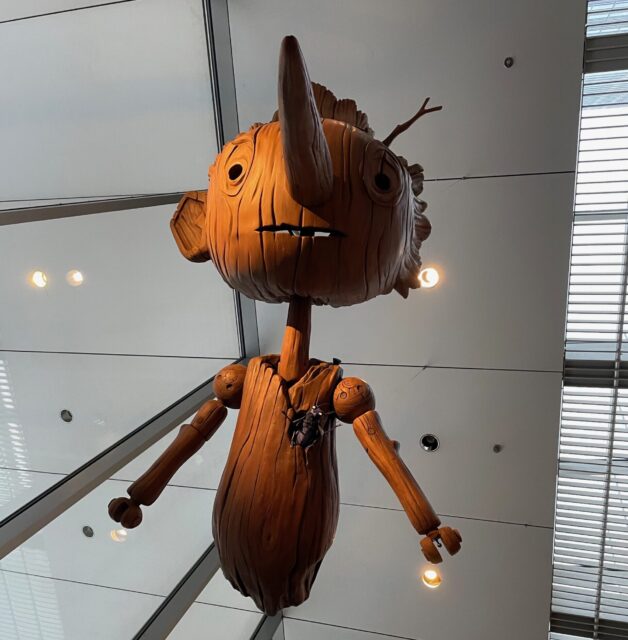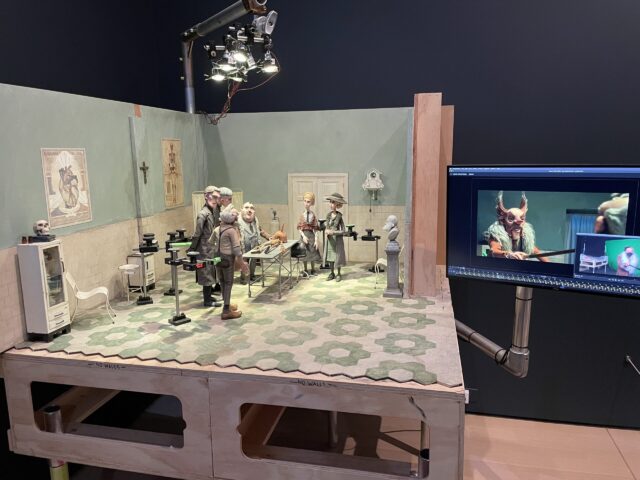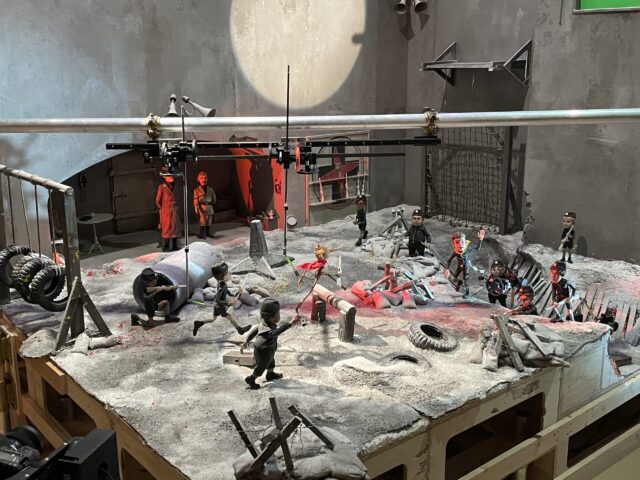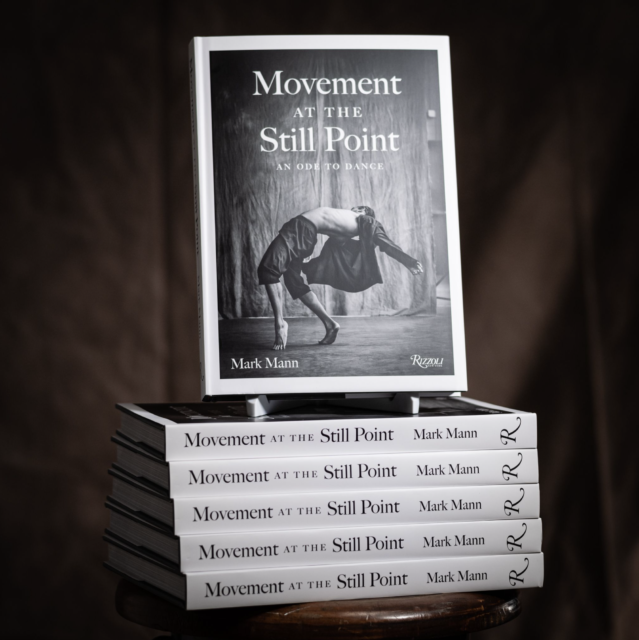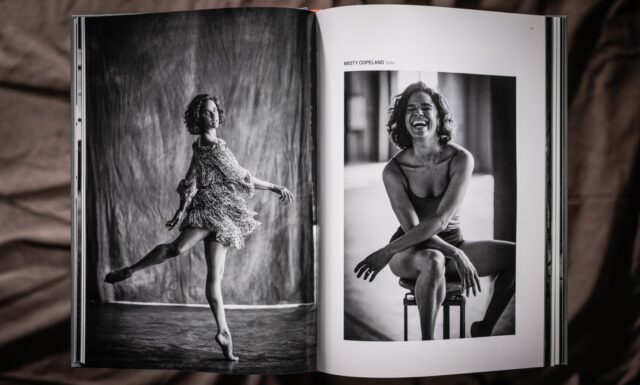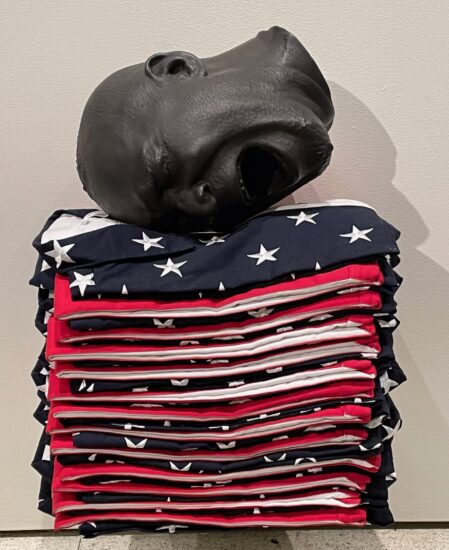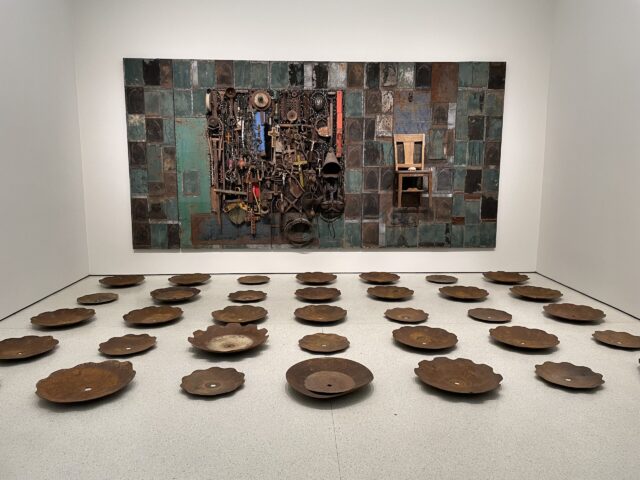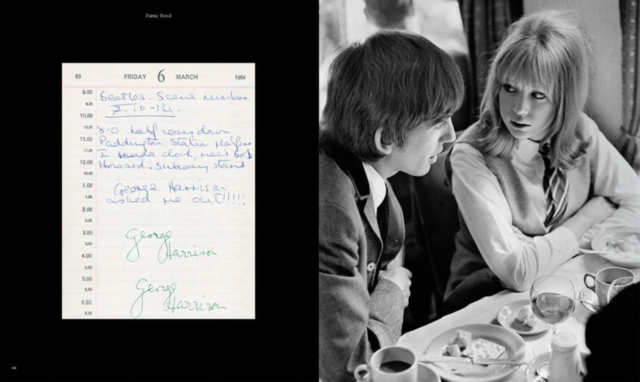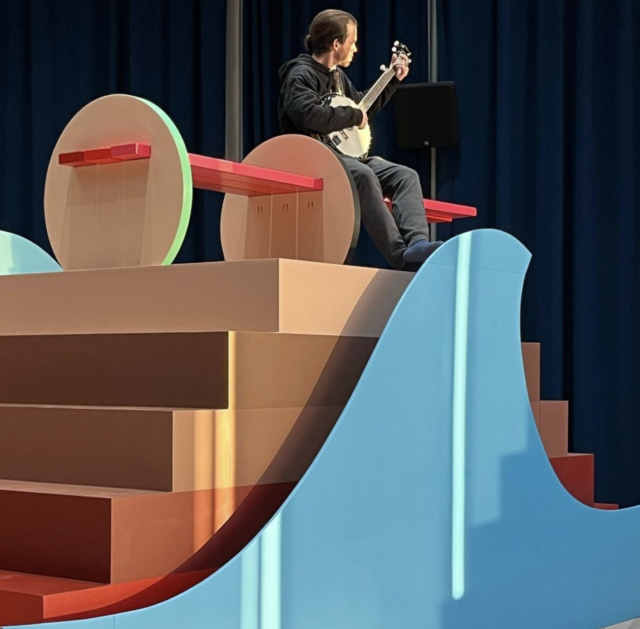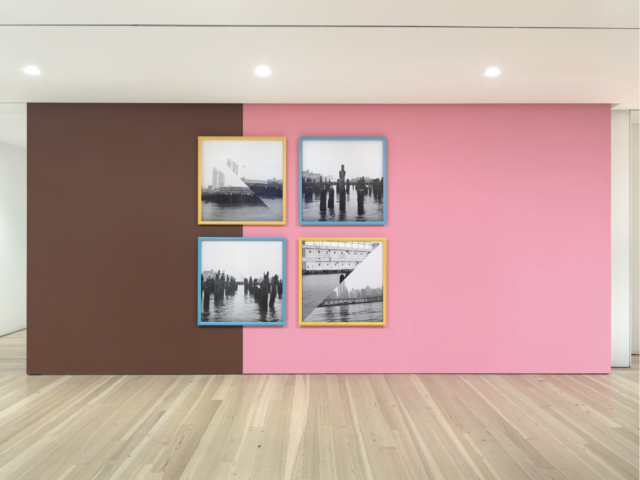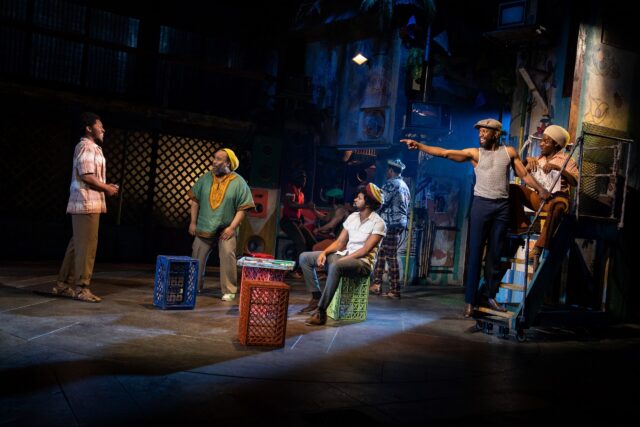
Ivan (Natey Jones, far left) arrives in the city seeking fame and fortune in The Harder They Come (photo by Joan Marcus)
THE HARDER THEY COME
Newman Theater, the Public Theater
425 Lafayette St. at Astor Pl.
Tuesday – Sunday through April 9, $105
publictheater.org
There’s a big difference between a show or movie with music and a fully fledged musical, in which original songs help propel the narrative. That divergence is one of the central flaws in the world premiere of The Harder They Come, at the Public’s Newman Theater through April 9.
The 1972 movie is a Jamaican cult favorite that recently celebrated its fiftieth anniversary; it follows a country boy named Ivanhoe Martin, portrayed by reggae legend Jimmy Cliff in his first and only starring role as an actor, who arrives in Kingston with little more than a guitar and the dream of making a hit record. The soundtrack is one of the all-time greats, consisting of genre-defining tunes by the Maytals (“Sweet and Dandy,” “Pressure Drop”), the Slickers (“Johnny Too Bad”), Desmond Dekker (“007 [Shanty Town]”), the Melodians (“Rivers of Babylon”), Scotty (“Draw Your Brakes”), and Cliff himself, who contributed six songs, including the title track, the only one written specifically for the film.
In her book, Public writer-in-residence and Tony and Pulitzer Prize winner Suzan-Lori Parks, who has written such hard-hitting plays as Topdog/Underdog, Fucking A, and Father Comes Home from the Wars . . . , squeezes too many songs that were background and incidental in the film into the show’s narrative, forcing them into the plot.
An accomplished singer-songwriter, as evidenced by her terrific Plays for the Plague Year, a three-hour intimate performance piece about the pandemic that reopens at Joe’s Pub on April 5, Parks adds several new songs to The Harder They Come, including “Hero Don’t Never Die,” “Please Tell Me Why,” and “Better Days,” expanding, and sometimes changing, the motivations of various characters as Parks attempts to smooth out the bumps and choppiness of the film.
Alas, that is part of its charm. And I’m still trying to understand why the second act opens with Johnny Nash’s “I Can See Clearly Now,” which Cliff recorded in 1993 for the film Cool Runnings about the 1988 Jamaican Olympic bobsled team. The song was part of Reggae Hit the Town: Crucial Reggae 1968-1972, a bonus disc added to the soundtrack album years later; Dekker’s “Israelites” also is in the show from the same collection.
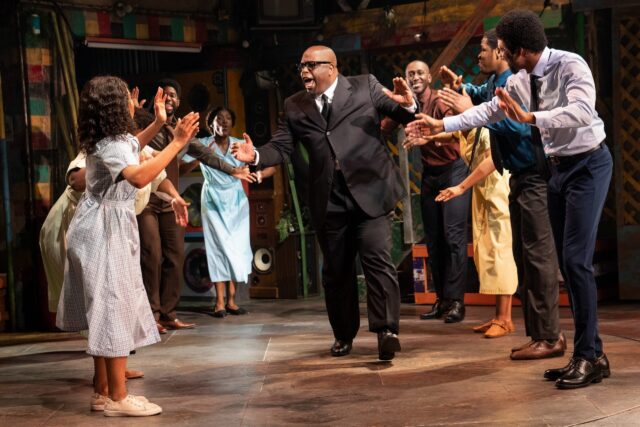
Preacher (J. Bernard Calloway) has a tight hold on his congregation in world premiere at the Public (photo by Joan Marcus)
The story is a rough and violent drama that begins with Ivan traveling to the big city to give his mother, Daisy (Jeannette Bayardelle), her pittance of an inheritance. She wants him to return to the country, but Ivan (Natey Jones) is determined to stay and become a star. With no place to go, he hooks up with the Holy Redeemer Church after meeting and instantly falling for the young and innocent Elsa (Meecah), the orphan ward of the church’s well-connected Preacher (J. Bernard Calloway).
Desperate to make a record, Ivan ultimately signs a terrible contract with local music mogul Hilton (Ken Robinson), a wealthy man who controls what gets played when and where. With no money, Ivan starts working for ganja dealer Jose (Dominique Johnson), who is in cahoots with a plainclothes cop named Ray (Dudney Joseph Jr). Everywhere he goes, Ivan creates conflict with the avaricious men of Kingston, battling religion, drug lords, law enforcement, and corporate greed in his determination to get what he believes he deserves. “You can get it if you really want it / But you must try, try and try, try and try,” he sings.
Instead of laying low like his best friend, Pedro (Jacob Ming-Trent), who also sells for Jose, Ivan can’t stop speaking his mind. After an altercation with a policeman, Ivan is on the run, attempting to hold things together while also reveling in his newfound fame.
Directed by Tony Taccone (Bridge & Tunnel, Wishful Drinking) with codirector Sergio Trujillo, who is best known for his choreography for jukebox bio-musicals (Summer: The Donna Summer Musical, A Bronx Tale), The Harder They Come contains numerous wonderful scenes with fabulous music, performed by a strong cast (Ming-Trent stands out, his character providing comic relief and an honest perspective) and an excellent six-piece band; Kenny Seymour’s orchestrations and arrangements do justice to the originals, although some snippets are too much of a tease and a few of Parks’s new songs are overly melodramatic. In addition, you never get to hear the title track in full; as a kind of encore, it is performed at the very end, but one stanza is curiously left out.
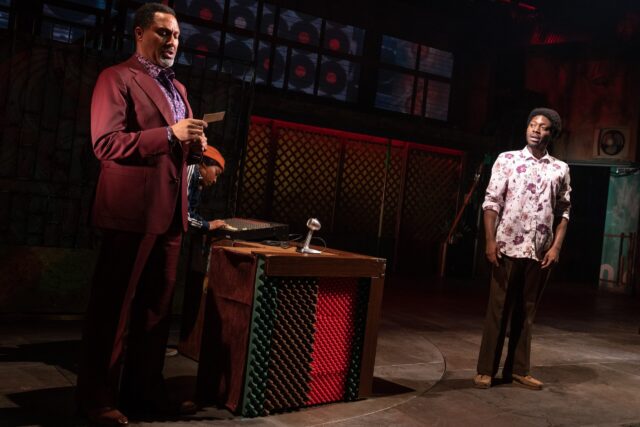
Local music mogul Hilton (Ken Robinson) offers Ivan (Natey Jones) a bad deal in The Harder They Come (photo by Joan Marcus)
Choreographer Edgar Godineaux makes sure the movement never gets out of hand on Clint Ramos and Diggle’s two-level shanty town set, strewn with garbage drums, used tires, multiple old TV sets and speakers on the walls, bamboo, palm leaves, and muted greens and yellows inspired by the Jamaican flag (found also on the railings near the stage), along with earth-toned colors that are also prominent in Emilio Sosa’s costumes. The sound is by Walter Trarbach, with lighting by Japhy Weideman.
In the film, directed by Perry Henzell and cowritten with Trevor Rhone, Cliff’s Ivan already had a hard edge, a willingness to become an outlaw to fight for what he thinks is fair. But in Parks’s version, Jones (Get Up Stand Up, Tina: The Tina Turner Musical) portrays a far more naive and good-natured Ivan, more sensitive to Elsa’s needs and not as inherently dangerous. Cliff’s Ivan is proud of what he did to the policeman and glories in becoming a hero-villain who cheats on his wife and smokes big spleefs, while Jones’s Ivan claims the incident was accidental and never fully inhabits the character’s bad side.
The show has been stripped of its nuance, too easily pitting good vs. evil amid hierarchical, colonialist power structures. While a lot has changed since the film came out half a century ago, a lot hasn’t. This theatrical iteration — Henzell oversaw the script for a 2005 British adaptation — ends up caught somewhere in between.
[Note: The Public is hosting the “Wheel & Come Again” art auction on the mezzanine level, with more than a dozen works available, from $300 to $1000, inspired by the film and musical, raising funds to benefit scholarships at the Edna Manley College of the Visual and Performing Arts in Kingston.]
